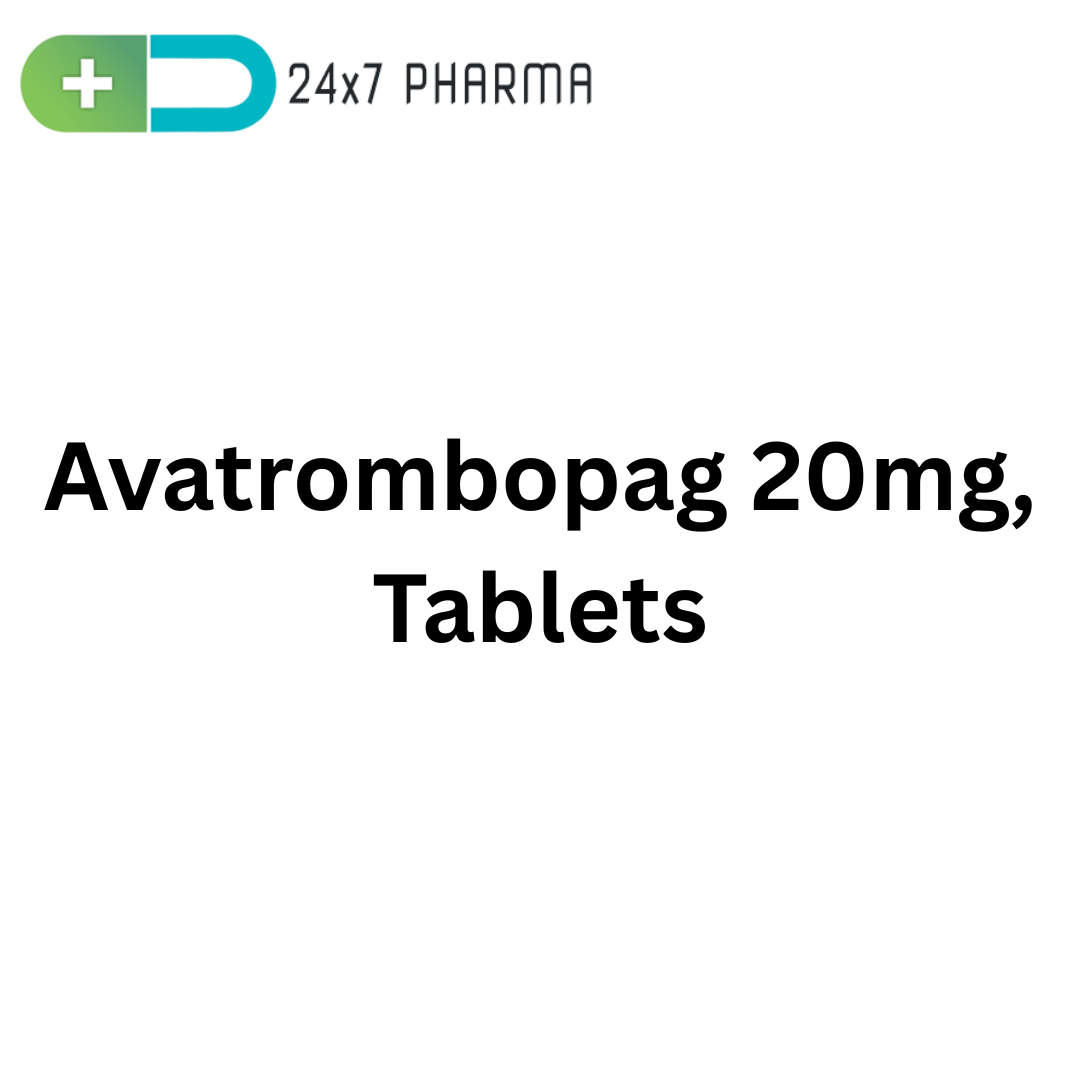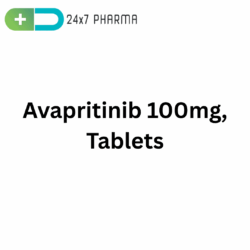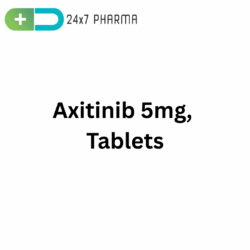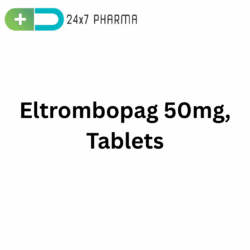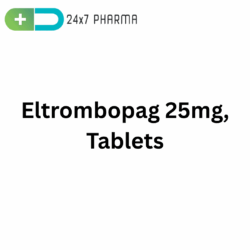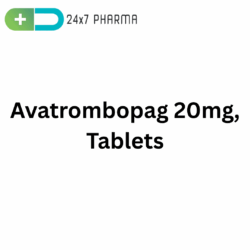LuciAvat 20mg, Avatrombopag Tablets
LuciAvat 20mg, containing the active ingredient avatrombopag, is a thrombopoietin receptor agonist developed by Lucius Pharmaceuticals.In certain patient groups, it is mostly used to treat thrombocytopenia, or low platelet counts. This medication works by stimulating the production of platelets, thereby reducing the risk of bleeding.
What is LuciAvat 20mg (Avatrombopag)?
LuciAvat 20mg is a prescription oral medication that contains Avatrombopag as its active ingredient. It is a member of the thrombopoietin receptor agonist (TPO-RA) medication class.
This medicine is primarily used to increase the platelet count in individuals with low platelet levels (a condition called thrombocytopenia), particularly in the following cases:
- Patients with low platelet counts who have chronic liver disease (CLD) and are scheduled for medical or dental procedures are at risk of bleeding.
- Patients with chronic immune thrombocytopenia (ITP) who have not responded well to previous treatments.
- By binding to the thrombopoietin receptor on megakaryocytes in the bone marrow, avatrombopag enhances platelet production.
Mechanism of Action
Targets the Thrombopoietin (TPO) Receptor (c-Mpl):
Natural thrombopoietin (TPO) interacts to the same transmembrane region of the c-Mpl receptor as avatrombopag. This receptor is present in megakaryocyte progenitor cells found in bone marrow.
Activates Key Intracellular Pathways:
Once bound, avatrombopag activates intracellular signaling cascades, especially:
- Janus kinase/signal transducer and transcription activator, or JAK-STAT
- MAPK (Mitogen-activated protein kinases)
- PI3K-AKT (Phosphatidylinositol 3-kinase pathway)
Stimulates Megakaryocyte Proliferation and Maturation:
These signaling pathways promote the growth, maturation, and differentiation of megakaryocytes—the large bone marrow cells responsible for producing platelets.
Increases Platelet Production:
Mature megakaryocytes release platelets into the bloodstream, thereby increasing the circulating platelet count.
Indications
Chronic Immune Thrombocytopenia: To treat chronic immune thrombocytopenia (ITP) in adults who have had an insufficient response to previous treatments, such as corticosteroids, immunoglobulins, or splenectomy.
Dosage and Administration
Chronic Liver Disease: 10–13 days prior to the planned procedure, start taking LuciAvat once daily for 5 days. The platelet count before the surgery determines the dosage:
- Platelet count <40 × 10⁹/L: 60 mg (3 tablets) daily.
- Platelet count 40 to <50 × 10⁹/L: 40 mg (2 tablets) daily.
Chronic Immune Thrombocytopenia: Initiate with 20 mg (1 tablet) once daily. Adjust the dose or frequency to maintain a platelet count ≥50 × 10⁹/L, not exceeding 40 mg per day.
Tablets should be swallowed whole with food.
Common side effects include:
- Headache
- Nausea
- Fatigue
- Abdominal pain
- Peripheral edema (swelling of extremities)
- Serious adverse effects may include:
- Signs of blood clots (e.g., chest pain, shortness of breath, swelling of limbs)
- Signs of infection (e.g., fever, chills, sore throat)
- Allergic reactions (e.g., rash, itching, swelling)
- Patients should report any unusual symptoms to their healthcare provider promptly .
Storage
Store LuciAvat tablets at room temperature between 20°C and 25°C (68°F to 77°F), with excursions permitted between 15°C and 30°C (59°F to 86°F). Keep the medication in its original packaging to protect from moisture and heat. Ensure it is out of reach of children
Benefits
- Increased Platelet Count: Effective in raising platelet levels, reducing bleeding risks.
- Convenient Administration: Oral tablet form simplifies dosing.
- Short-Term Use: Particularly beneficial for patients undergoing procedures requiring temporary platelet elevation.
Prescription
LuciAvat 20mg is available only through a prescription from a licensed healthcare provider. It should be used under the supervision of a physician experienced in managing thrombocytopenia
Drug Interactions
Avatrombopag may interact with:
- CYP2C9 and CYP3A4 Inhibitors: Such as fluconazole and itraconazole, which may increase avatrombopag levels.
- CYP2C9 and CYP3A4 Inducers: Like rifampin, which may decrease avatrombopag effectiveness.
Patients should inform their healthcare provider of all medications, including over-the-counter drugs and supplements, to avoid potential interactions .
FAQs
Can LuciAvat be used in children?
Safety and efficacy in pediatric patients have not been established.
Is LuciAvat safe during pregnancy?
The effects on an unborn baby are unknown. Consult a healthcare provider before use.
Can I take LuciAvat with other medications?
Some medications may interact with LuciAvat. Discuss all current medications with your doctor.
What should I do if I miss a dose?
Take the missed dose as soon as you remember, unless it’s almost time for the next dose. Do not double the dose.
Conclusion
LuciAvat 20mg (Avatrombopag) is a clinically valuable oral medication designed to manage thrombocytopenia in specific patient populations, particularly those with chronic liver disease undergoing invasive procedures and those with chronic immune thrombocytopenia (ITP) who have had inadequate responses to other treatments. Its targeted mechanism of action—stimulating platelet production via the thrombopoietin receptor—makes it both effective and relatively well-tolerated when used appropriately.
The ease of oral administration, combined with its ability to provide a predictable increase in platelet count, makes LuciAvat especially practical in short-term procedural settings and longer-term ITP management. While it does have potential side effects and drug interactions, careful monitoring and adherence to prescribing guidelines help minimize risks.
Overall, LuciAvat offers a beneficial, non-invasive alternative to platelet transfusions and other more intensive treatments for thrombocytopenia, representing a significant advancement in supportive care for patients at risk of bleeding. As with any prescription medication, its use should be guided by a healthcare provider familiar with the patient’s individual condition, treatment goals, and risk factors.

